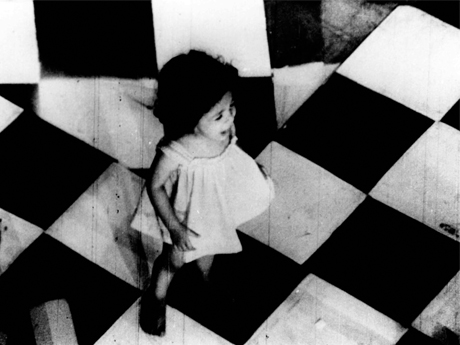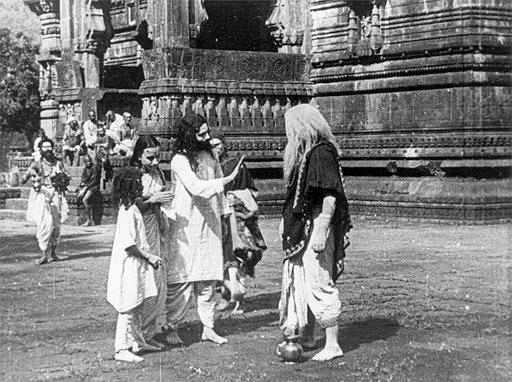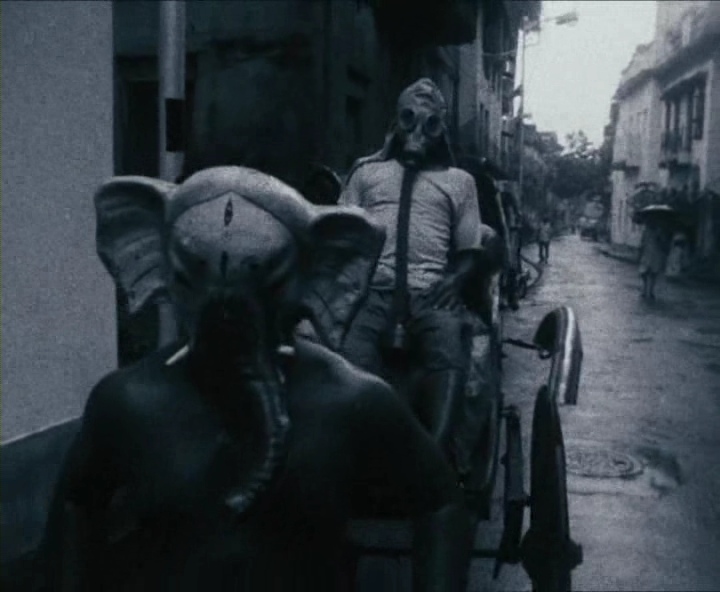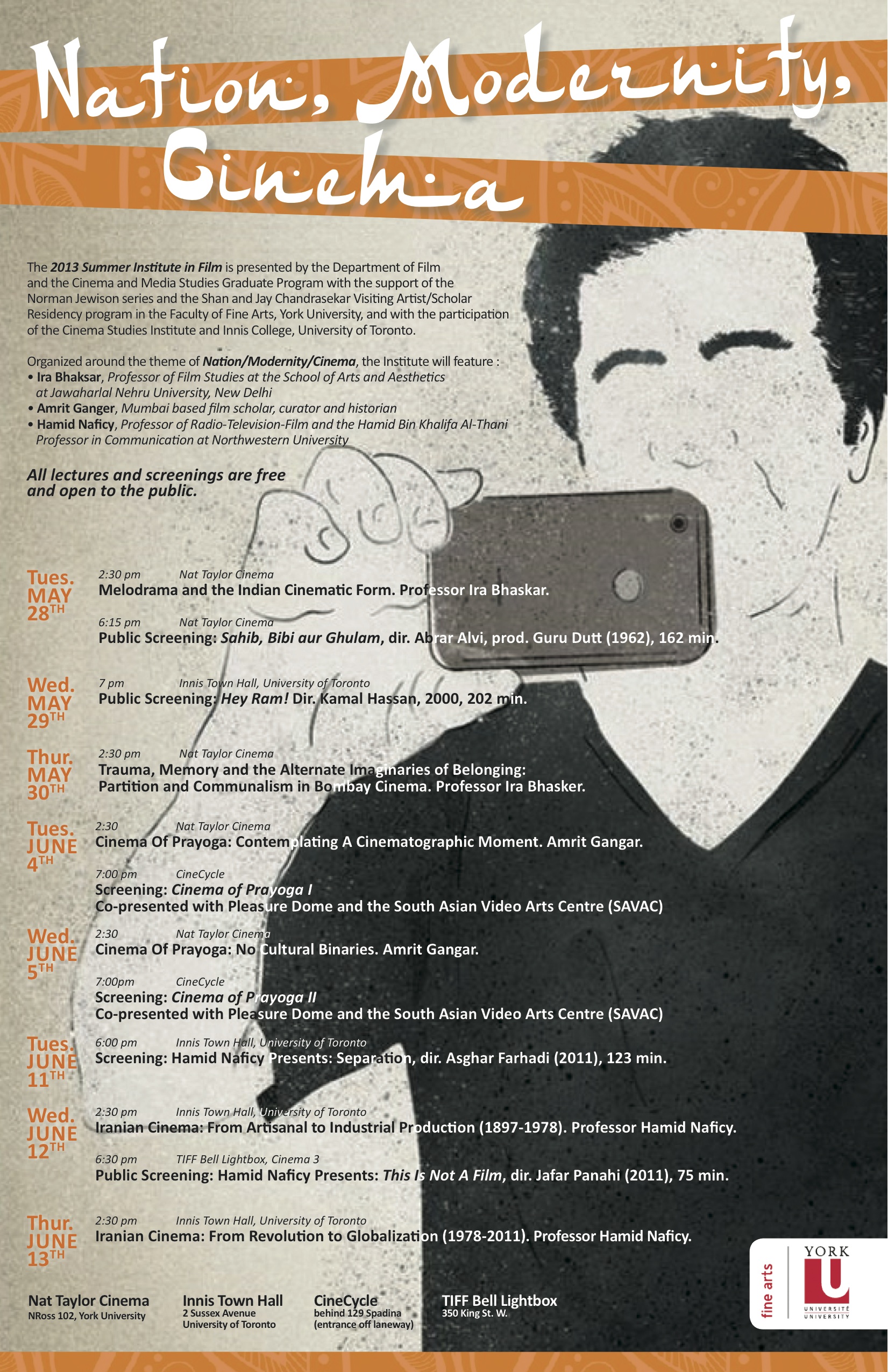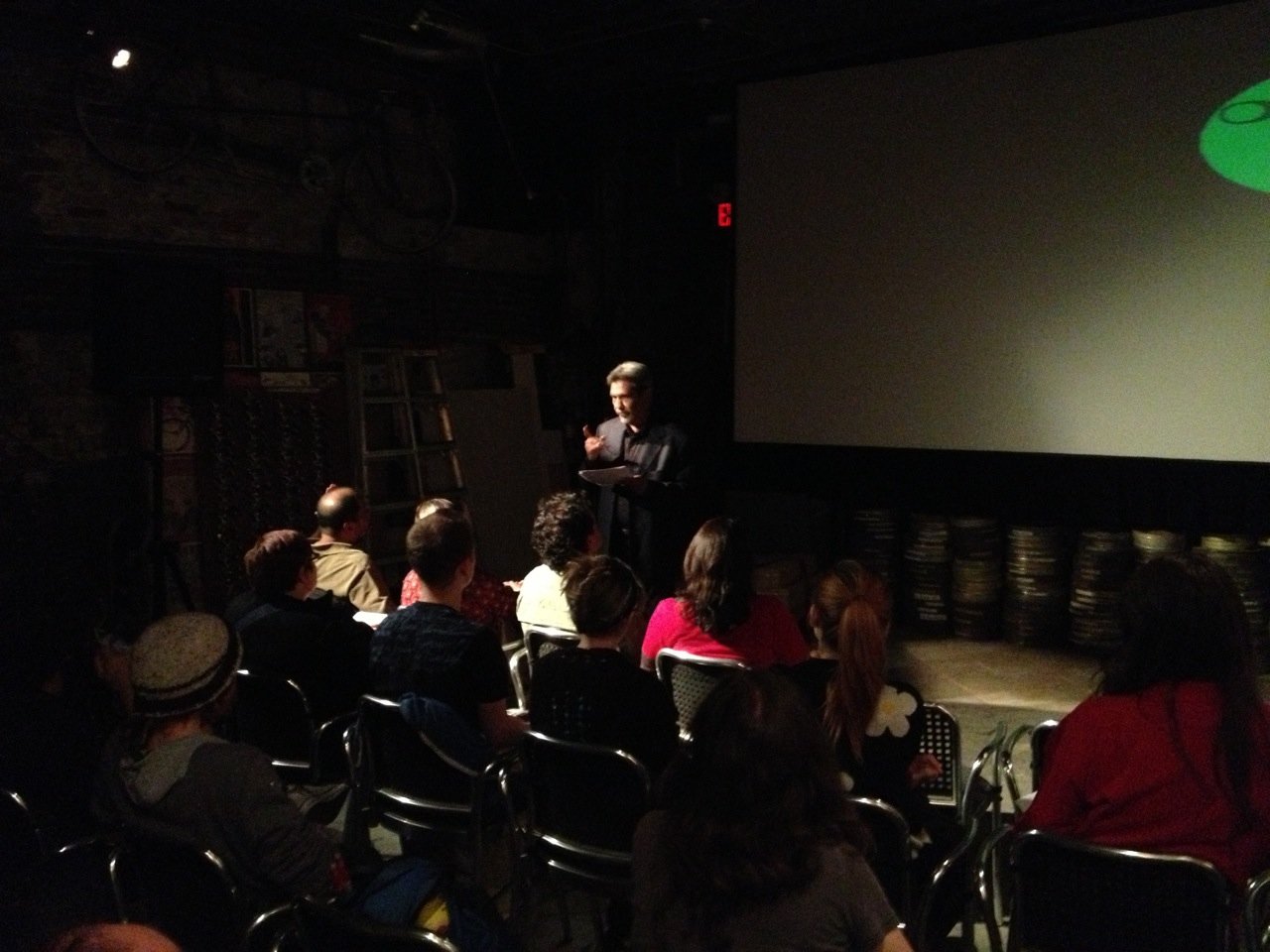Part of Summer 2013
The Summer Institute in Film at York University in conjunction with Pleasure Dome and SAVAC are pleased to present Cinema of Prayoga: Indian Experimental Film & Video 1913—2006. Amrit Gangar, the Mumbai-based film scholar, curator and historian attending the Summer Institute—Nation, Modernity, Cinema has programmed two evenings of rarely screened works. The programme includes the magical silent-era ‘swadeshi’ experiments of Dadasaheb Phalke, works produced under the Films Division in the 1960s and politically-engaged contemporary video art from Bombay, Delhi, Bangalore and the UK. Selected from the 2006 exhibition at the Tate Gallery presented in collaboration with no.w.here (London) and its partner Filter (Mumbai), these films demonstrate independence from the constraints of the generic Western avant-garde, and represent a radical break from the dominant forms of filmic expression in contemporary India including the all-pervading Bollywood, pushing new boundaries of what constitutes film art in India.
“Cinema of Prayoga is a conceptual framework that locates the history of experimental film in India within an ancient history of pre-modern tradition of innovation, of prayoga. It celebrates a cinematographic idiom that is deeply located in the polyphony of Indian philosophy and cultural imagination. It attempts to reconfigure the generally accepted notion of the experimental and the avant-garde by conjuring the term ‘Prayoga’ from Indian philosophical thought. The Prayoga oeuvre is marked by its deeply temporal temperament, the samaya svabhāva, so to say.” Amrit Ganger
Amrit Ganger is a Mumbai based film scholar, curator and historian. His latest book is Cinema. Culture. Capital. Context: India (Mumbai: Monfakira Mandirpara, 2010) and he has presented his new concept Cinema of Prayoga at the Tate Modern, the National Centre for the Performing Arts in Mumbai. In 2011 he curated an Indian film programme for the event Paris-Delhi-Mumbai organized by the Centre Pompidou, Paris.
CINEMA OF PRAYOGA
Program 1, Tuesday, June 4, 7:30 PM
Curatorial Introduction by Amrit Gangar, 10 mins
Cinema of Prayoga, Amrit Gangar, 20 mins
Chitrasutram (The Image Threads), Vipin Vijay, 2010, 104 mins
Scene 32, Shambhavi Kaul, 2009, 6 mins
Shree Krishna Janma (Birth of Shree Krishna), D.G. Phalke, 1918, 9 mins
Program 2, Wednesday, June 5, 7:30 PM
Curatorial Introduction by Amrit Gangar, 10 mins
Cinema of Prayoga, Amrit Gangar, 15 mins
song for an ancient land, Part I, Kabir Mohanty, 51 mins
At the Stairs, Rajesh Jala, 2008, 30 mins
Kramasha (To be continued…), Amit Dutta, 2007, 22 mins
Kalighat Athikatha (Kalighat Fetish), Ashish Avikunthak, 1999, 23 mins
All works presented on video projection.
Video> Amrit Gangar explains the concept ‘Cinema of Prayoga’
“In order to understand the nuances of ‘Cinema of Prayoga’ definition, it is essential to bear in mind that time and space concepts in India are different from a Western perspective. Many things in nature occur in recurring cycles. Days, tides, seasons, and years are all cyclic in nature. So, the time in India is symbolised by a wheel, that regards it as cyclical and quantic.
In the Western society, time is a line. Time moves in only one direction. For a Westener, the individual and personal actions shape the world and craft the destiny.
Indian mentality is rooted in the concept of living and enjoying the present moment. The eternal repetition – of ages, seasons and human events – highlights the importance of the present moment. The ritual of making tea is just one example among many. In India, everyone is underwired to everyone else. Every singular action affects the community, and everyone feels part of this community.
Amrit Gangar feels part of this community and at the same time he thinks that a stronger cultural exchange,between Western and Indian culture, would be fruitful for both part. In particular, he thinks that Indian philosophy; prayoga’s approach, could be used as a constructive tool to improve the European and American experimental Cinema”. (Riccardi Inanna)

